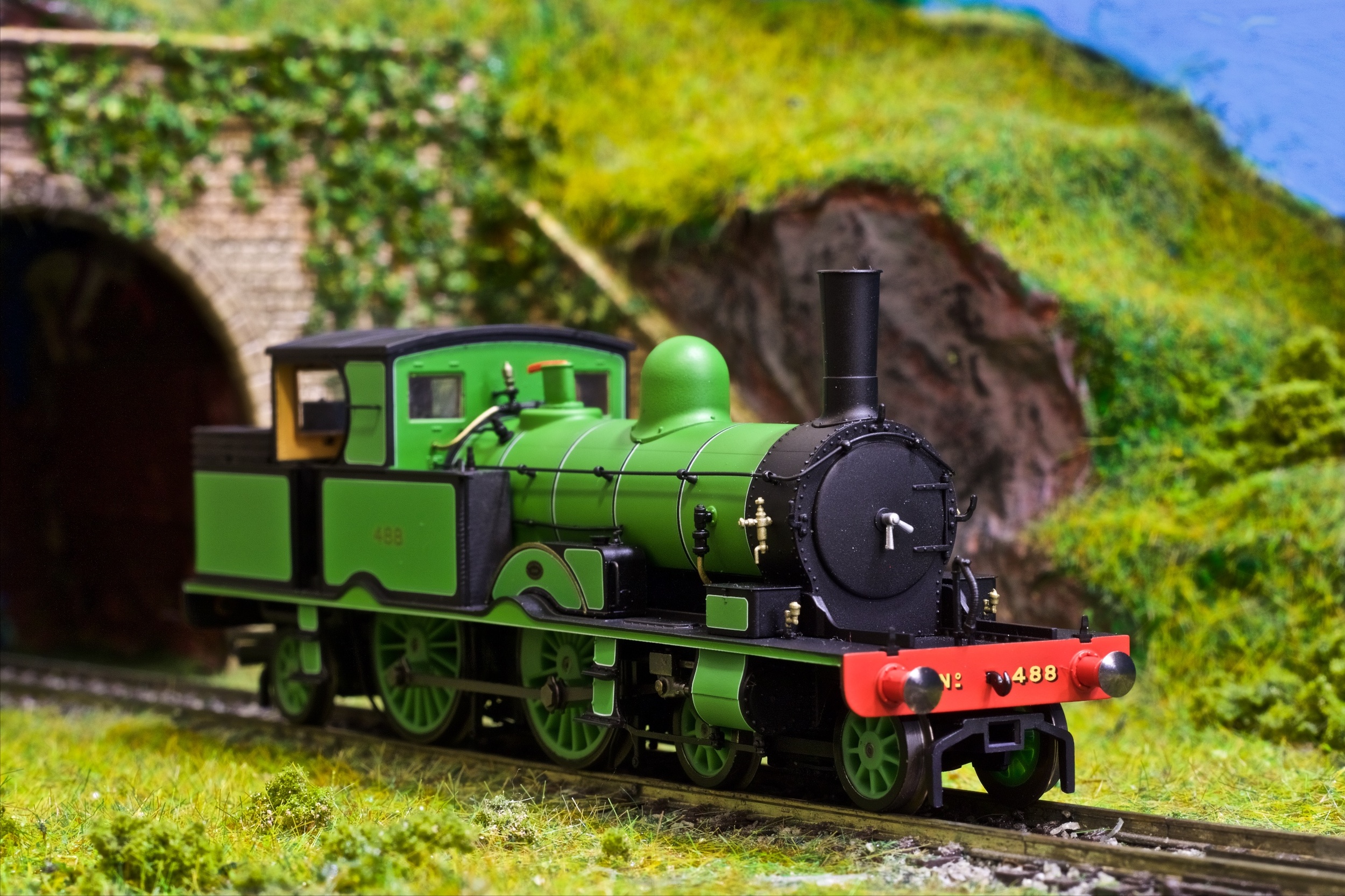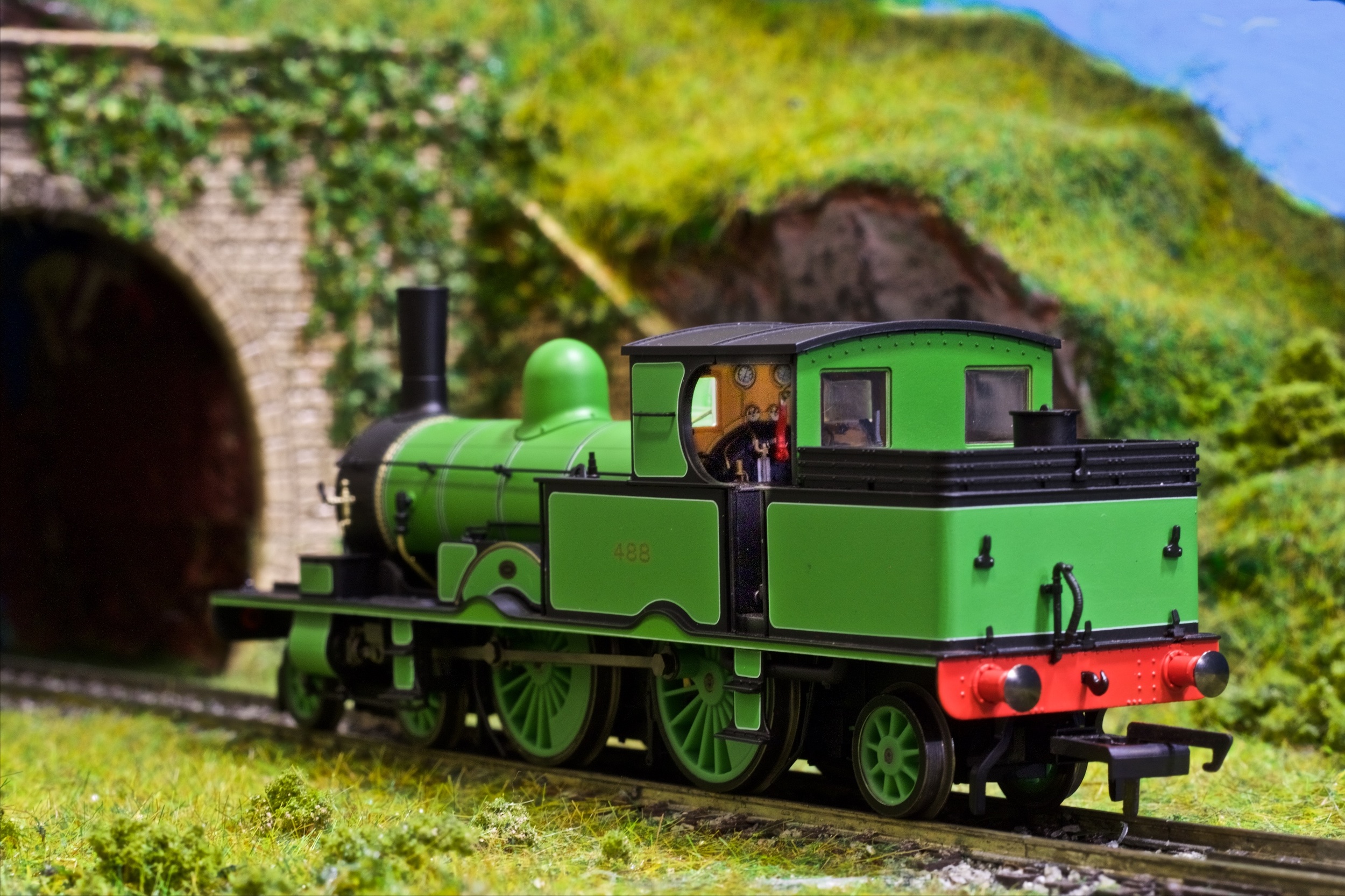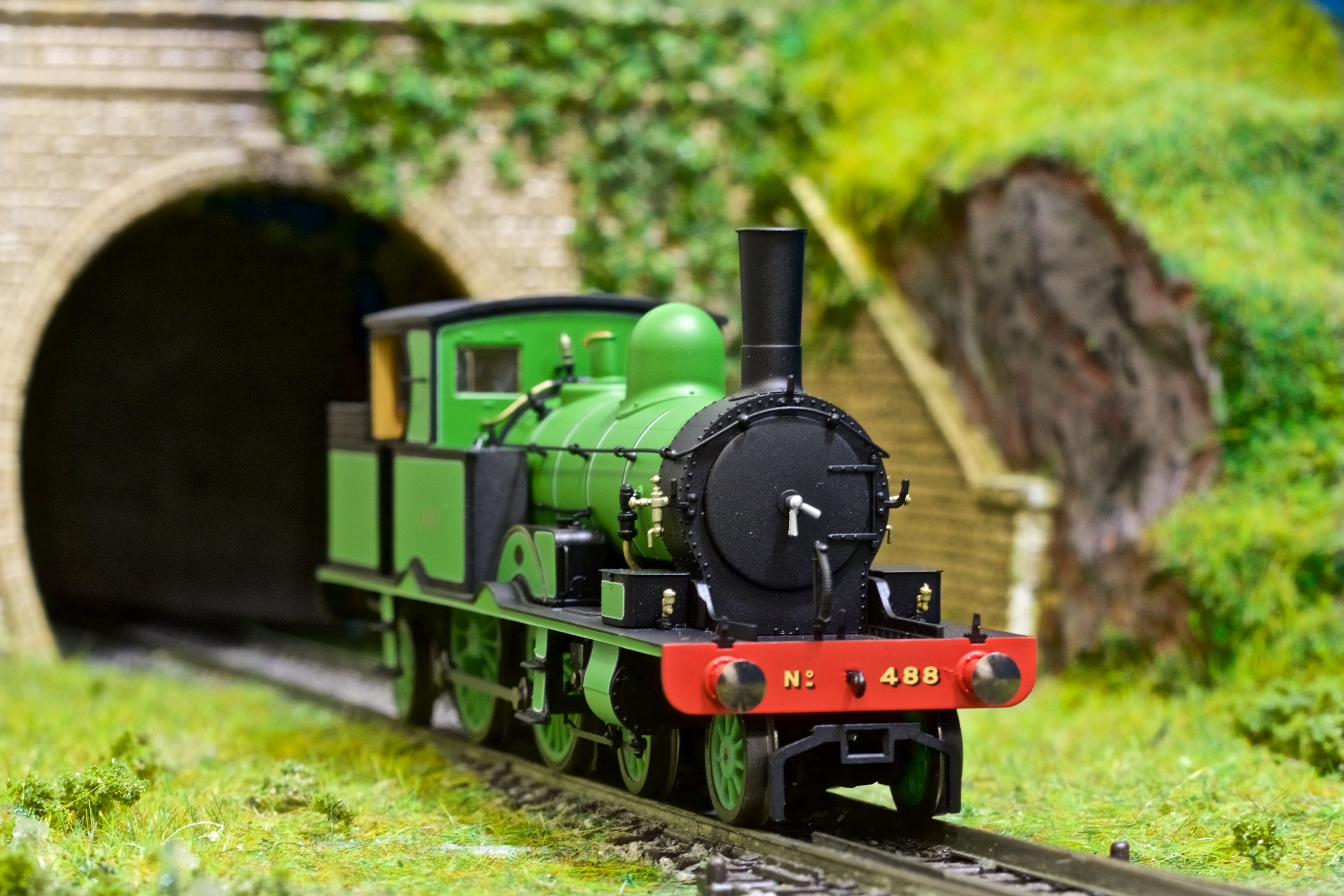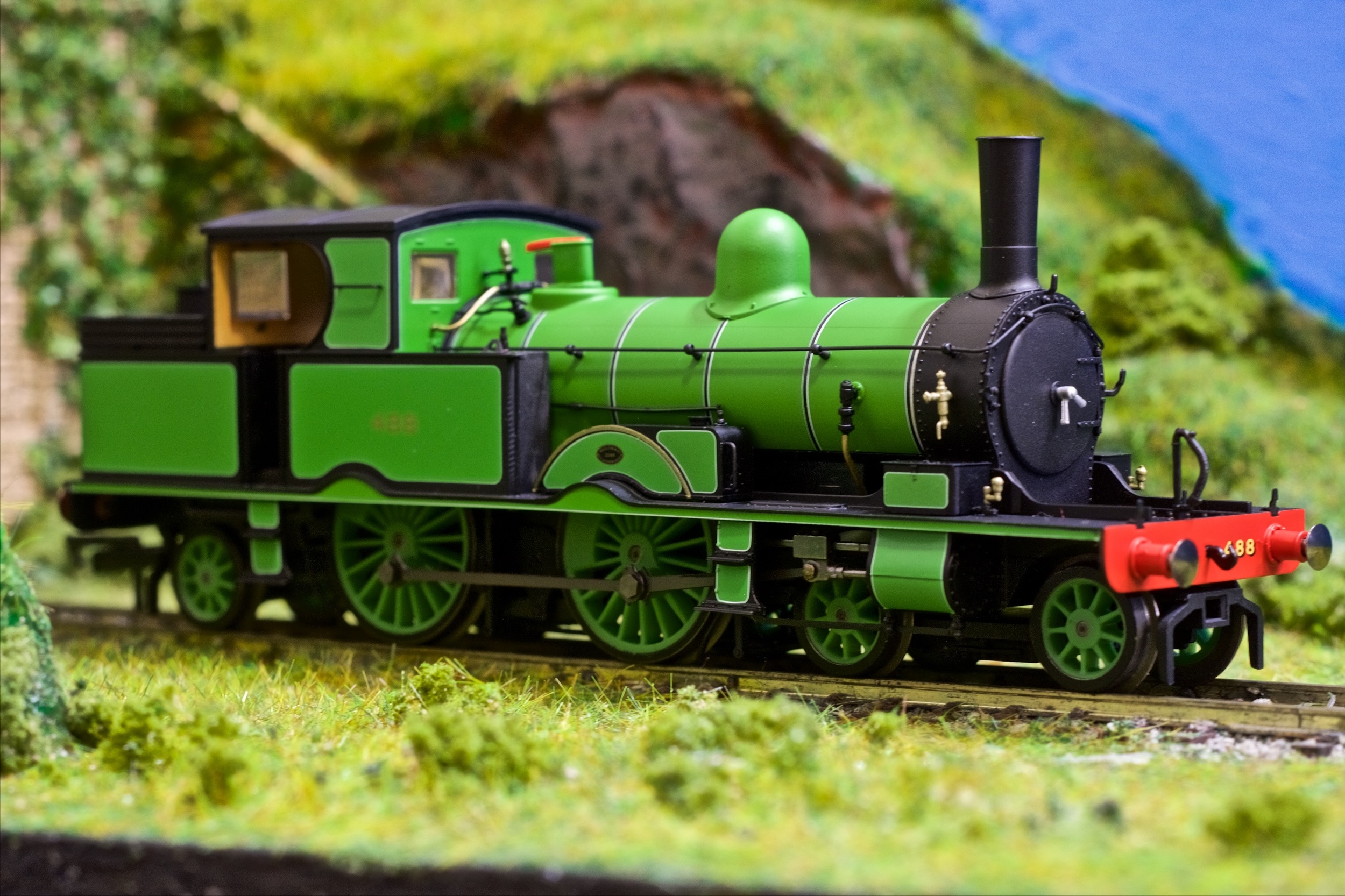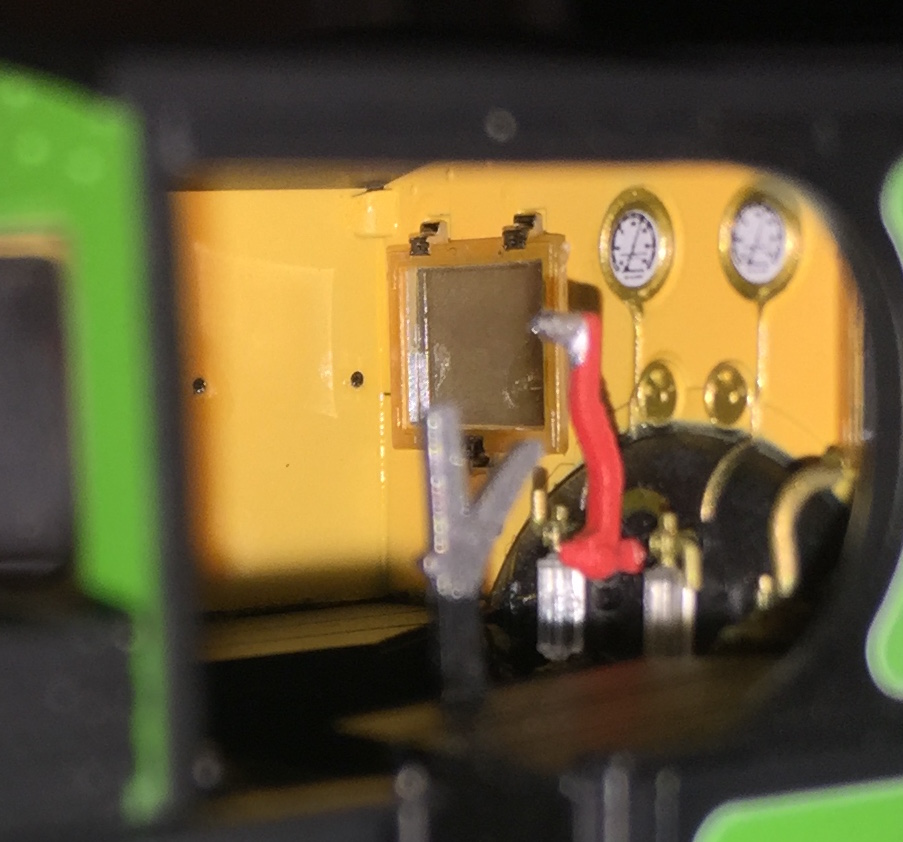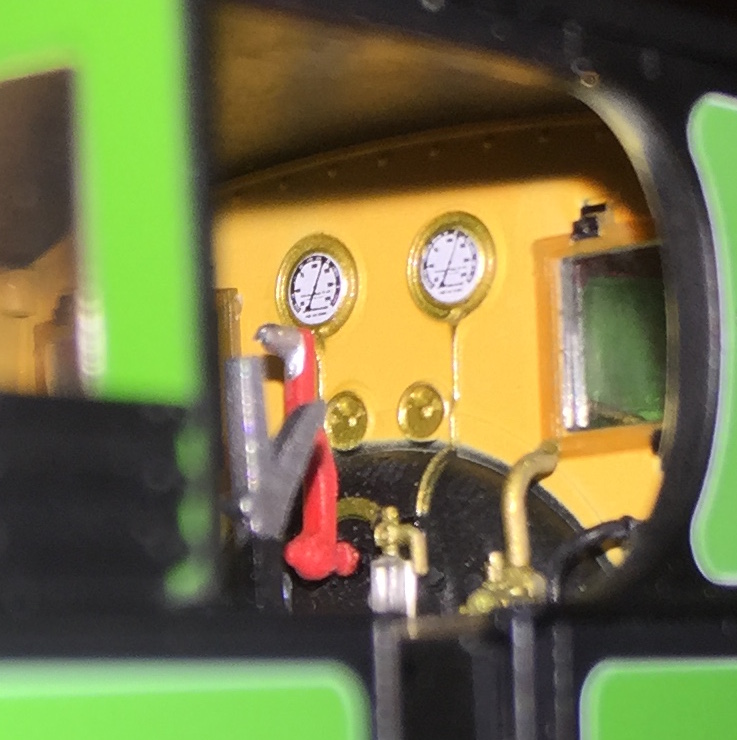REVIEW MODEL KINDLY LOANED BY OXFORD RAIL
Written by Tony Richards.
Brief history of the prototype
Photo from Bluebell Railway by Mike Esau.
The 4-4-2 ‘Radial’ tank designed by William Adams for the L&SWR in1882 was one of those elegant, almost iconic Victorian locos which has topped modellers’ wish-lists for years. Indeed, it is difficult to understand why a ready-to-run model has been so long coming, although the reason probably lies in its complicated design and the many detail differences which could be found throughout the class during its life.
Initially designated as the 415 class, by 1885 71 Radial tanks had been built by four different manufacturers with all but three either scrapped or sold on by the end of the 1920’s. The three that survived soldiered on on the Lyme Regis branch until the early 1960’s. Originally only two were allocated to the branch but in 1946, to cover locomotive unavailability, an additional one was allocated, having been bought back by the Southern Railway from the East Kent Railway [for £120].
The ‘Radial’ names owes its origin to the radial axlebox under the coal bunker at the rear of the loco, allowing the wheels considerable side-play, a boon on tightly curved track.
One Radial tank has survived into non-operational preservation and may be seen, a little forlorn, on The Bluebell Railway.
The Adams’ Radial in OO
In the early 2000s, OO Works produced an expensive limited run of this class. These very occasionally appear at auction, often hammering in excess of £150. In terms of detail, they are somewhat basic by current standards and cannot be compared in any way against Oxford’s model. Wrenn Railways intended producing one also, their 1974 catalogue showing a photograph of the proposed model in the same livery as the Oxford release. This came to nothing however.
Kits remain available: Dean Sidings producing a somewhat challenging resin bodied version and from the 1960-70’s, K’s white-metal kits surface from time-to-time [but are better avoided...]. Expensive brass kits are available also. Until this new release there had been no more-widely available model however and so Oxford will have provided the first opportunity for most to own one.
It should also be mentioned that Hornby embarked on their Adams’ Radial project at around the same time as Oxford. Their model is due for release much later in 2016 however and, consequently, no easy comparisons can be made at this stage. So, a two horse race which, in terms of delivery at least, has been won by Oxford.
The Oxford model
The L&SWR model represents Oxford’s third release of this class [with three more to follow]. The model incorporates improved blackened handrails, revised wheelsets [with finer flanges] and a wealth of separately fitted small detail, as evidenced in the accompanying photographs. The livery of L&SWR Passenger Sage Green is very neatly applied and convincing. The lining is commendable also, the maker’s plate on the front splasher is legible and where masking has been
required to allow the painting of buffer beams, the cab roof and smoke-box, etc., no over- spray is evident. The cab details are particularly well presented, with the cab itself painted in light ochre and the various handles, glasses, dials and levers picked out appropriately.
The model ran well straight from the box although a period of running-in improved this further. It was quiet and controllable and held the track well. Weighing in at c.200 grams [c.7ozs], this model will cope easily with prototypical loads on level track but it will struggle with express-length coach rakes or steep inclines. As with the prototype however, it should be remembered that long coach rakes would be extremely challenging: the Radial was simply not designed for those. On that basis, traction was quite acceptable.
The model is supplied with slim-line NEM couplings, dummy prototypical couplings and brake rodding in an accessory packet. The buffers are sprung, pick-ups are fitted to all wheels and the whole is powered by a 5-pole motor.
This all represents a considerable package for a price that not only falls below £100 but has also been discounted below £90. The Hornby model will cost considerably more when it arrives. At the risk of being picky however, there are one or two detail issues which will be noted by some. The first of these is the motor / gearbox unit. This protrudes a little under the boiler where there should have been daylight. Is this a major problem ? No, but it may irk some. Further, the bunker coal rails are incorrect as modelled and were not filled in in L&SWR days. It seems likely that these were copied from the preserved tank in Sussex and this could be easily remedied if required.
Conclusion
The detail issues identified above should not detract in any way from what was otherwise a fine model. I was really impressed by Oxford’s first foray into the OO loco world. The Adams’ Radial will prove a popular choice for many and I look forward particularly to the later Southern Railway liveried release. The model represents excellent value for money and, with six livery variations, it should provide something for everyone.
Producing such a complicated model was a bold move for a new entrant but one which I hope will pay off. And based on the quality of their Radial, Oxford’s GWR Dean Goods should be an equally exciting release later this year.
For
● excellent livery application
● the prototype’s outline captured well with little compromise
● a wealth of neat added detail
● ultimately a wide variety of livery schemes
● excellent value for money
Against
● nothing which seriously detracts, although some may be put off by limited daylight under the boiler
Overall score : 9/10
